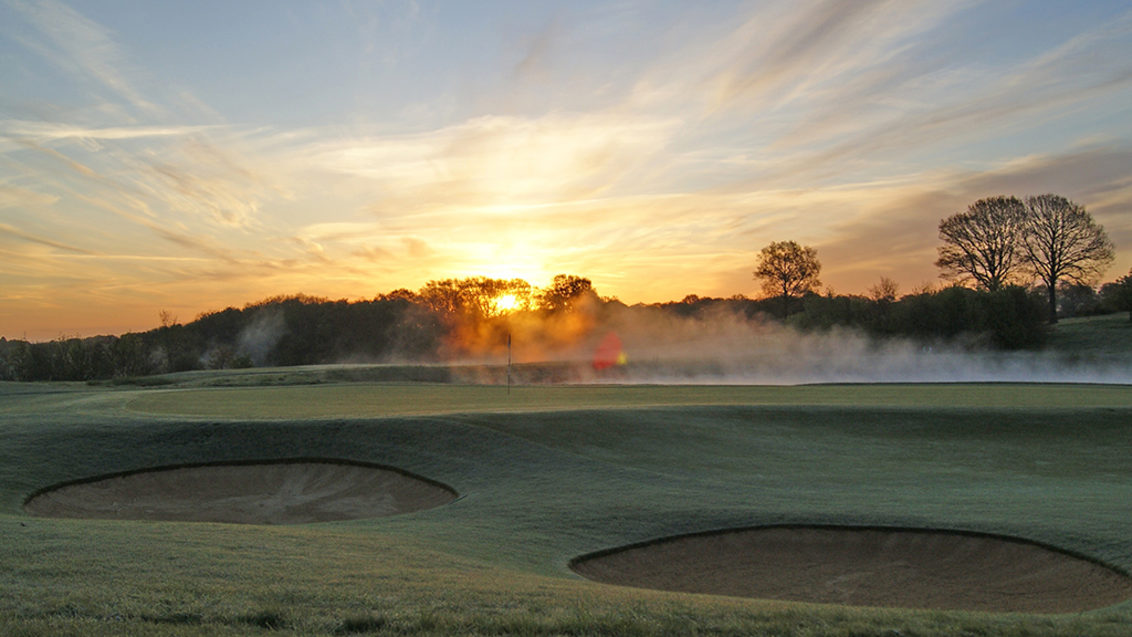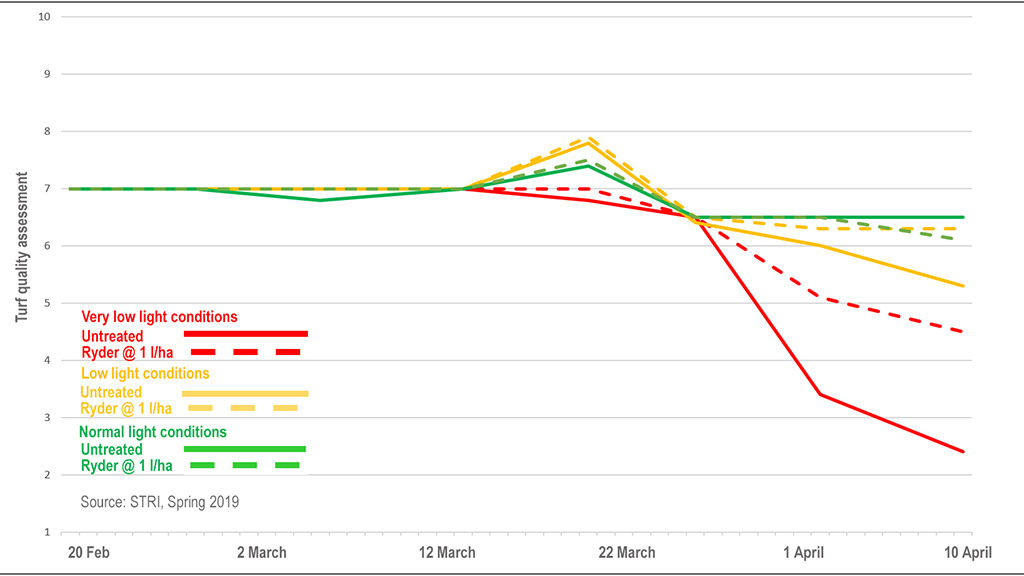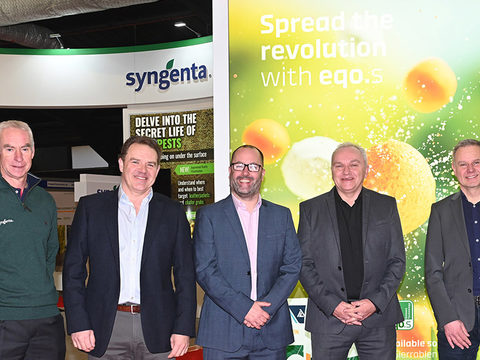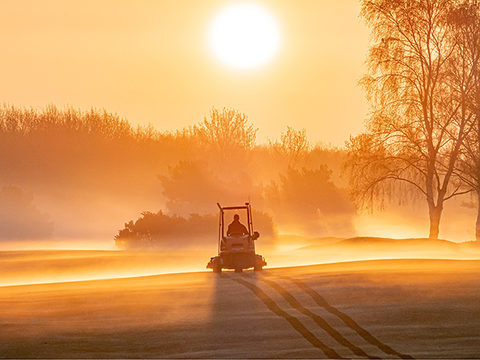Winter greens

The use of turf pigments in winter does enable surfaces to remain looking good through harsh conditions. But that’s only of value if the underlying health of the turf is good and is kept in good enough condition for full recovery in the spring.
Many find the use of pigments to define course design features is particularly effective through the winter months when second-cut and semi-rough is less apparent. The benefits have now been shown to go beyond cosmetic appearance - and can add agronomic benefits, writes Syngenta Technical Manager, Sean Loakes.

In reality a short-term fix to paint the surface green with a pigment will not mask significant damage to surface quality from a disease attack, or enable realistic recovery if there is loss of turf cover.
However, Syngenta research in the UK and Ireland has shown that integrating Ryder pigment with the fungicide strategy can bring overall benefits for appearance and performance of greens right through the winter.
That ensures when growing conditions kick off in the spring, turf is in the best position to take advantage of longer days and more sunlight.
One of the fears of using pigments in winter has been that it could block plants from utilising the limited available light for photosynthesis. However, R&D trials with Ryder have shown that it only blocks UV light that is not part of the spectrum used by plants; the red and blue light spectrum that is used by plants still penetrates through to the leaf.
Research by STRI has shown that even in low light conditions, turf health and growth is not hindered. As day length extends and light intensity increases, however, the amount of harmful UV light that is blocked increases proportionally.
That’s immensely valuable when data shows light intensity (DLI) in the midlands, for example, falls to a typical average 5.73 per day in December on an unimpeded green (3.03 on a cloudy day, to 8.43 in clear conditions). By the end of February that average would have doubled to 10.59 (7.35 – 13.84 DLI).
The use of Ryder not only assures an attractive green colour and protects turf from harmful UV light, but is also highly effective in complementing fungicide programmes to maintain better overall turf quality.
Trials by independent turf researchers in Ireland, ISTI, under high Microdochium patch pressure, recorded that the combination of Ryder tank-mixed with the fungicide programme resulted in no visible disease effects on the surface, compared to 0.5% scarring with the fungicide alone. Where no fungicide was used, disease infection hit over 10% of surface area affected over the same period of the trial.
Even if Ryder had been used on the area untreated with fungicide, the level of damage could not be masked or sustained – with the potential result of needing extensive renovations to repair in the spring and slow recovery of good playing conditions.
STRI trials with specialist controlled light chamber studies demonstrated that healthy turf could survive for several weeks under very low light conditions, but then went through an extremely rapid decline in quality – losing 50% quality in just six days, and a further 30% over the following week.

When treated with Ryder, however, the quality remained significantly better, with just 22% and 10% loss over the same period (Fig 1).
Under less intense low light pressure conditions a similar pattern was identified, with the Ryder treatment holding quality at virtually the same level as turf under full light conditions.
The trial used Ryder applied at an application rate equivalent to a 1 litre/ha per month. That can be made in tank-mix with any application, with trials and greenkeepers’ experience having shown especially good colour results when it is applied in conjunction with a dew dispersant.
Its use in combination with wetting agents has been proven to lift the colour response, due to the additional spreading on the leaf. That makes it an excellent tank mix not only for fungicides, but winter penetrants and dew suppressants too.
Extensive application trials has provided the recommendation to apply in a water volume of up to 500 litres per hectare using XC Nozzles – delivered with an 04 nozzle operated at 3 bar spraying at 3.8 km/hr, for example.
When treating turf at a longer height of cut, on fairway or semi-rough, for example, spraying in two passes of Ryder at half rate at right angles to each other can achieve the more consistent leaf coverage and colour.
Integrating Ryder into this winter’s disease control fungicide strategy could help greens’ presentation right through the season, and ensure they are best placed for a clean and fast recovery in the spring.













